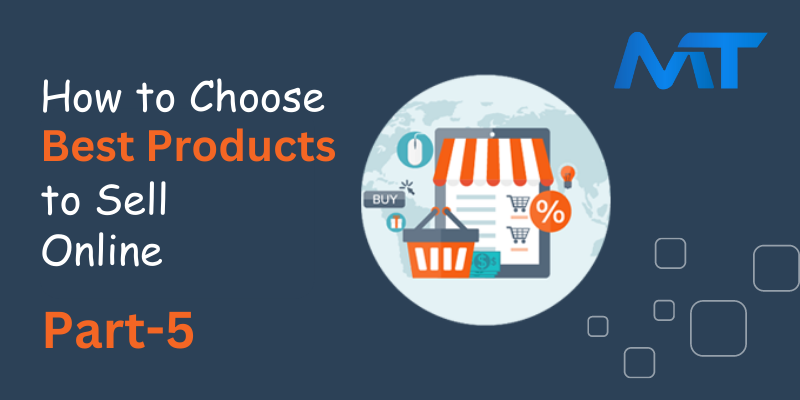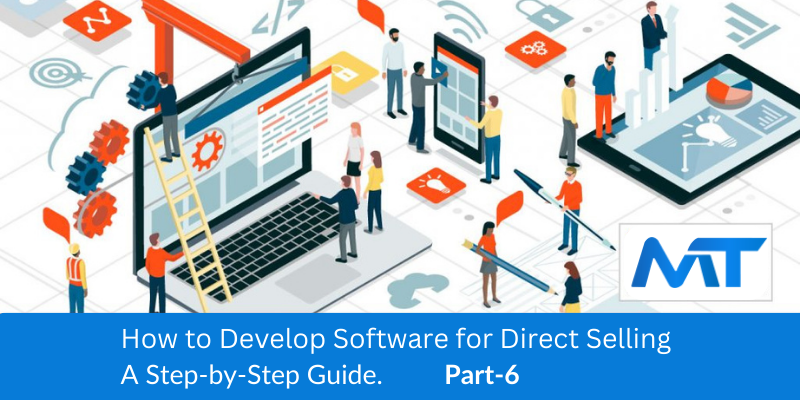How to Do Direct Selling MLM: A Complete Guide

How to Do Direct Selling MLM: A Complete Guide
Direct selling MLM (Multi-Level Marketing) is a business model that allows individuals to sell products or services directly to consumers and earn commissions based on their sales and the sales of their recruited downline. It offers a flexible and rewarding opportunity for entrepreneurs to build a successful business. If you're considering getting into direct selling MLM, this complete guide will walk you through the process:
1. Understand the MLM Model
Before diving into direct selling MLM, familiarize yourself with how the MLM model works. Learn about the compensation plan, commission structure, and the importance of building a strong network of distributors to maximize your earnings.
2. Choose the Right MLM Company
Research and select a reputable MLM company that offers products or services you are passionate about. Look for a company with a solid track record, transparent policies, and good reviews from existing distributors.
3. Learn About the Products
Become an expert on the products or services you'll be selling. Understand their benefits, features, and how they stand out from the competition. Knowing your products inside out will boost your credibility and confidence when pitching them to potential customers.
4. Identify Your Target Market
Define your target market and identify the audience most likely to be interested in your products. Tailor your marketing efforts to address their needs and preferences effectively.
5. Develop Your Sales and Networking Skills
Enhance your sales and networking skills to effectively promote your products and recruit new distributors. Practice active listening, effective communication, and the art of persuasion to connect with potential customers and team members.
6. Leverage Online Platforms
Use the power of the internet to expand your reach. Create a professional website, engage on social media, and explore e-commerce platforms to showcase your products and grow your network online.
7. Build and Train Your Team
In MLM, building a strong team is crucial for success. Recruit individuals who are passionate about the products and motivated to grow their own businesses. Provide them with proper training, mentorship, and support to help them achieve their goals.
8. Focus on Customer Satisfaction
Happy customers lead to repeat sales and referrals. Provide excellent customer service, address any issues promptly, and go the extra mile to ensure customer satisfaction.
9. Stay Compliant with Regulations
Adhere to all legal and ethical standards set by the MLM industry and local regulations. Transparency and compliance build trust with both customers and potential team members.
10. Be Persistent and Stay Motivated
Building a successful direct selling MLM business takes time and effort. Stay persistent, maintain a positive attitude, and stay motivated even during challenging times.
In conclusion, direct selling MLM offers a lucrative opportunity for entrepreneurs to build a successful business by selling products directly to consumers and growing a network of distributors. By understanding the MLM model, choosing the right company, mastering product knowledge, identifying your target market, honing your sales and networking skills, leveraging online platforms, building and training a strong team, focusing on customer satisfaction, staying compliant, and maintaining motivation, you can excel in the world of direct selling MLM.
| How to Do Networking: A Comprehensive Guide [PART1] |
| How to Become a Leader in Network Marketing: A Step-by-Step Guide [PART2] |
| How to Get Success in MLM: A Comprehensive Guide [PART3] |
| How to Start Your Own MLM Company: A Step-by-Step Guide [PART4] |
| How to Select the Best Product: A Comprehensive Guide [PART5] |
| How to Develop Software for Direct Selling: A Step-by-Step Guide [PART6] |
| Things to Keep in Mind in Multi-Level Marketing: A Comprehensive Guide [PART7] |

How to Do Direct Selling MLM: A Complete Guide [PART1]
How to Do Networking: A Comprehensive Guide
Networking is a crucial skill in both personal and professional life. Building strong connections and relationships with others can open doors to various opportunities and lead to personal growth and success. Whether you're attending a networking event or connecting with people online, mastering the art of networking can significantly impact your life. In this comprehensive guide, we'll explore some essential tips on how to do networking effectively using HTML tags as examples:
1. Create a Professional Website
Having a professional website is like having your online business card. Use HTML to structure your website with appropriate tags such as , . Ensure that your website showcases your skills, accomplishments, and contact information clearly.
2. Utilize Social Media Platforms
Engaging with others on social media is an excellent way to network online. Use HTML to format your social media posts and share valuable content. Connect with professionals in your field using platforms like LinkedIn and use tags to link to relevant articles and resources.
3. Attend Networking Events
When attending networking events in person, use HTML tags to create and print professional business cards with your contact information and a link to your website or LinkedIn profile.
4. Engage in Conversations
Whether online or offline, engage in meaningful conversations with others. Use tags to structure your responses and ask open-ended questions to encourage further discussions.
5. Be a Good Listener
Listening is a crucial skill in networking. Use tags to emphasize important points made by others and demonstrate that you are actively engaged in the conversation.
6. Offer Value to Others
Share your knowledge and expertise with others. Use tags to create lists of valuable tips and insights you can offer to those you network with.
7. Follow Up After Networking
After networking events or online conversations, use HTML to create personalized follow-up emails or messages. tags to emphasize your appreciation for the conversation and express your interest in staying connected.
8. Be Authentic and Genuine
Use HTML tags to showcase your personality and authenticity. Share personal stories or experiences using ; tags to emphasize key points and connect with others on a deeper level.
9. Stay Consistent
Networking is not a one-time activity. Use HTML to schedule regular networking efforts and ensure you stay consistent in reaching out and connecting with others.
10. Seek Opportunities to Help Others
Use HTML to create online resources or guides that offer assistance and value to others. Use <a> tags to link to these resources and share them with your network.
In conclusion, networking is a valuable skill that can lead to numerous opportunities and connections. Whether you're networking online or attending in-person events, using HTML tags effectively can enhance your networking efforts and help you build strong and meaningful relationships with others.
How to Do Direct Selling MLM: A Complete Guide[PART3]
How to Become a Leader in Network Marketing
Leadership is a crucial aspect of success in network marketing. As you build your network marketing business, developing strong leadership skills will not only help you grow your team but also inspire and empower others to achieve their goals. Here are essential steps on how to become a leader in network marketing:
1. Lead by Example
Leadership starts with setting a positive example for your team. Be a product of the product – use and believe in the products or services you are promoting. Demonstrate dedication, consistency, and a strong work ethic in your own business activities.
2. Develop a Vision
Paint a clear and compelling vision of where you and your team are headed. A well-defined vision will inspire others to join your network and work towards common goals. Share your vision regularly and keep your team motivated and focused on the bigger picture.
3. Communicate Effectively
Effective communication is key to being a successful leader. Be open, transparent, and approachable with your team members. Regularly share updates, provide feedback, and offer guidance to keep everyone informed and engaged.
4. Foster a Supportive Culture
Create a supportive and collaborative culture within your team. Encourage teamwork, celebrate each other's successes, and offer help when needed. A positive team culture enhances morale and productivity.
5. Provide Training and Mentorship
Offer training sessions and mentorship to help your team members develop their skills and knowledge. Share your experiences, insights, and strategies to guide them in their network marketing journey.
6. Set Goals and Track Progress
Help your team set clear and achievable goals. Regularly track their progress and celebrate milestones. Goal-setting provides direction and motivation, and tracking progress ensures everyone stays on track towards success.
7. Lead with Empathy
Show empathy and understanding towards your team members. Recognize that everyone's journey is different, and each person faces unique challenges. Offer support and encouragement to help them overcome obstacles.
8. Embrace Challenges and Learn from Failures
As a leader, be willing to face challenges and learn from failures. Demonstrating resilience and adaptability will inspire your team to do the same and view setbacks as opportunities for growth.
9. Encourage Personal Development
Encourage personal development among your team members. Recommend books, podcasts, and courses that can help them grow both personally and professionally.
10. Recognize and Appreciate Efforts
Regularly acknowledge and appreciate the efforts of your team members. Recognize their achievements, whether big or small, to boost their morale and foster a sense of belonging within the team.
In conclusion, becoming a leader in network marketing requires dedication, vision, effective communication, and a supportive approach. By leading by example, developing a vision, communicating effectively, fostering a supportive culture, providing training and mentorship, setting and tracking goals, leading with empathy, embracing challenges, encouraging personal development, and recognizing efforts, you can become an inspiring and influential leader in the world of network marketing.

How to Do Direct Selling MLM: A Complete Guide [PART2]
How to Become a Leader in Network Marketing: A Step-by-Step Guide
Leadership is a key aspect of success in network marketing. Becoming a leader not only helps you achieve your personal goals but also empowers and inspires your team to excel. In this step-by-step guide, we'll explore the essential steps to become a leader in network marketing, using HTML tags as examples:
1. Master the Products or Services
Use tags to emphasize the importance of mastering the products or services offered by your network marketing company. In-depth knowledge builds confidence and trust among your team members and potential customers.
2. Lead by Example
Use tags to highlight the significance of leading by example. Demonstrate dedication, consistency, and professionalism in your own actions, setting the standard for your team to follow.
3. Provide Training and Support
Use tags to organize resources and tips for providing training and support to your team members. Offer guidance, mentorship, and educational materials to help them grow.
4. Communicate Effectively
Use tags to emphasize the importance of effective communication. Be a good listener and a clear communicator, ensuring that everyone on your team understands their roles and goals.
5. Set Goals and Encourage Goal Setting
Use tags to list the steps for setting goals. Encourage your team members to set their own objectives and provide support in achieving them.
6. Develop Leadership Skills
Use tags to link to leadership development resources. Continuously work on improving your leadership skills, such as decision-making, problem-solving, and conflict resolution.
7. Build Strong Relationships
Use tags to emphasize the importance of building strong relationships with your team members. Create a supportive and positive environment that fosters trust and collaboration.
8. Recognize and Celebrate Achievements
Use tags to highlight the significance of recognizing and celebrating the achievements of your team members. Acknowledge their efforts and successes to motivate and inspire them further.
9. Be Resilient
Use tags to emphasize the need for resilience in network marketing. Be prepared to face challenges and setbacks, and demonstrate a positive attitude even during tough times.
10. Lead with Integrity
Use tags to stress the importance of leading with integrity. Be honest, transparent, and ethical in all your dealings, gaining the respect and loyalty of your team.
In conclusion, becoming a leader in network marketing requires dedication, skill development, and a genuine desire to support and empower your team. By mastering the products or services, leading by example, providing training and support, communicating effectively, setting and encouraging goals, developing leadership skills, building strong relationships, recognizing achievements, being resilient, and leading with integrity, you can rise as a successful leader in the world of network marketing.

How to Do Direct Selling MLM: A Complete Guide [PART3]
How to Get Success in MLM: A Comprehensive Guide
Success in MLM (Multi-Level Marketing) requires dedication, strategic planning, and a strong focus on building and leading a successful team. MLM offers a unique opportunity for individuals to earn income through product sales and team building. If you're looking to excel in the world of MLM, this comprehensive guide will provide you with essential tips and strategies to achieve success:
1. Choose the Right MLM Company
Start by thoroughly researching and selecting a reputable MLM company that aligns with your values and offers products or services you are passionate about. A strong and trustworthy MLM company provides a solid foundation for your success.
2. Master the Products or Services
Become an expert on the products or services you'll be promoting. Use HTML to create a professional website that showcases the products and their benefits, along with detailed product descriptions using tags and appealing images using tags.
3. Define Your Target Market
Identify your target market and understand their needs and preferences. Use HTML to create and tags for listing the key characteristics of your target audience, and tailor your marketing efforts accordingly.
4. Develop a Solid Marketing Strategy
Create a comprehensive marketing strategy that includes online and offline methods. Use HTML to structure your strategy and break it down into actionable steps using tags.
5. Build a Strong Online Presence
Use HTML to create and optimize your professional website and social media profiles. Leverage social media platforms to engage with potential customers and team members using tags for linking to relevant content.
6. Focus on Relationship Building
In MLM, strong relationships are essential for success. Use HTML to structure your communications and follow-up messages with potential leads, emphasizing the importance of building lasting connections.
7. Provide Excellent Customer Support
Exceptional customer support leads to satisfied customers and repeat sales. Use HTML to create and tags to emphasize the importance of promptly addressing customer inquiries and resolving issues.
8. Recruit and Train a Strong Team
In MLM, building a strong team is vital. Use HTML to create training materials and resources for your team members, and organize them using tags to ensure easy navigation.
9. Set Clear Goals and Monitor Progress
Establish specific and achievable goals for your MLM business. Use HTML to create a visual representation of your goals, such as charts or graphs using tags, and regularly monitor your progress.
10. Stay Committed and Stay Positive
Success in MLM takes time and effort. Use HTML to create inspirational quotes or affirmations using tags, and keep a positive mindset to stay motivated throughout your journey.
In conclusion, getting success in MLM requires a combination of marketing skills, relationship building, and strong leadership. By choosing the right MLM company, mastering the products or services, defining your target market, developing a solid marketing strategy, building a strong online presence, focusing on relationship building, providing excellent customer support, recruiting and training a strong team, setting clear goals, and maintaining a positive mindset, you can pave the way for a successful and rewarding career in MLM.

How to Do Direct Selling MLM: A Complete Guide [PART4]
How to Start Your Own MLM Company: A Step-by-Step Guide
Starting your own MLM (Multi-Level Marketing) company is an exciting venture that offers the potential for financial success and independence. However, it requires careful planning, legal considerations, and strategic decision-making. In this step-by-step guide, we'll walk you through the process of starting your own MLM company, using HTML tags as examples:
1. Market Research and Business Plan
Begin by conducting thorough market research to identify viable product or service opportunities. Use tags to list potential target markets and products. Create a detailed business plan outlining your company's mission, objectives, compensation plan, and marketing strategy.
2. Legal Considerations
Consult with legal experts to understand the legal requirements and regulations for MLM companies in your country or region. Use tags to emphasize the importance of compliance and ensuring that your business adheres to all necessary legal guidelines.
3. Choose a Compensation Plan
Decide on the compensation plan that will govern how your distributors will earn commissions and bonuses. Use tags to display examples of different compensation plan structures, such as binary, unilevel, or matrix.
4. Develop Your Product Line
Create a product line that offers unique and high-quality products or services. Use tags to showcase product images and tags to provide detailed descriptions of each product.
5. Build Your MLM Website
Use HTML to design and develop a professional website for your MLM company. Utilize tags to structure the layout. Ensure that your website is user-friendly and mobile-responsive.
6. Establish Distributor Training and Support
Implement a comprehensive training program for your distributors to equip them with the knowledge and skills they need to succeed. Use tags to highlight the importance of ongoing support and mentorship for your distributors.
7. Launch Your MLM Company
Use HTML to create eye-catching banners and graphics to announce the launch of your MLM company. Utilize tags to emphasize exciting promotions and incentives for early joiners.
8. Marketing and Promotion
Develop a marketing strategy to promote your MLM company and attract distributors and customers. Use tags to link to social media profiles and other marketing channels.
9. Monitor and Evaluate Performance
Regularly monitor the performance of your MLM company and analyze sales data and distributor activity. Use tags to display performance metrics and use tags for visual representations of data.
10. Provide Excellent Customer Service
Offer exceptional customer service to ensure customer satisfaction and repeat business. Use tags to highlight the importance of customer retention.
In conclusion, starting your own MLM company is a rewarding venture that requires careful planning, legal compliance, product development, and a strong marketing strategy. By conducting market research, addressing legal considerations, choosing a compensation plan, developing a product line, building a professional website, providing distributor training and support, launching your MLM company, implementing marketing and promotion strategies, monitoring performance, and offering excellent customer service, you can lay a solid foundation for a successful MLM business.

How to Do Direct Selling MLM: A Complete Guide [PART5]
How to Select the Best Product: A Comprehensive Guide
Choosing the right product is crucial for individuals and businesses alike. Whether you are a consumer looking for a personal purchase or a business owner seeking products to sell, making the right choice can significantly impact your satisfaction and success. In this comprehensive guide, we'll explore the steps to select the best product, using HTML tags as examples:
1. Identify Your Needs and Preferences
Start by identifying your specific needs and preferences. Use tags to list the key factors that are important to you, such as functionality, quality, price range, and brand reputation.
2. Research the Market
Conduct thorough research to explore the available options in the market. Use tags to link to reliable sources of product information, customer reviews, and expert recommendations.
3. Compare Features and Specifications
Use tags to create a side-by-side comparison of different products' features and specifications. This will help you make an informed decision based on your specific requirements.
4. Consider the Price and Budget
Set a budget for your purchase and consider the price of the products you are evaluating. Use tags to emphasize the importance of staying within your budget while getting the best value for your money.
5. Read Customer Reviews
Customer reviews can provide valuable insights into the real-world performance of a product. Use tags to highlight key points from positive and negative reviews to weigh the pros and cons of each product.
6. Assess Product Quality and Durability
Use tags to emphasize the importance of product quality and durability. Consider the materials used, manufacturing process, and warranties offered to ensure you invest in a reliable and long-lasting product.
7. Evaluate Brand Reputation
Research the reputation of the brands offering the products. Use tags to highlight the significance of choosing products from reputable and trustworthy brands with a history of delivering quality goods.
8. Consider After-Sales Support
After-sales support is crucial, especially for complex or expensive products. Use and tags to organize information about the available support options, customer service, and warranty coverage.
9. Make an Informed Decision
Use HTML tags to structure your decision-making process. Summarize the key points and factors considered using and tags, and ensure that you are confident in your choice.
10. Purchase from Reputable Retailers
Use tags to link to reputable online retailers or local stores where you can purchase the selected product. Ensure that you are buying from trusted sources to avoid counterfeit or low-quality products.
In conclusion, selecting the best product involves thorough research, comparison, and consideration of various factors. By identifying your needs and preferences, researching the market, comparing features, considering the price and budget, reading customer reviews, assessing product quality and durability, evaluating brand reputation, considering after-sales support, making an informed decision, and purchasing from reputable retailers, you can ensure a satisfying and successful product selection experience.

How to Do Direct Selling MLM: A Complete Guide [PART6]
How to Develop Software for Direct Selling: A Step-by-Step Guide
Direct selling companies often require specialized software to manage their operations, track sales, commissions, and manage their distributor network efficiently. Developing software for direct selling involves careful planning, coding, and testing to create a reliable and user-friendly platform. In this step-by-step guide, we'll walk you through the process of developing software for direct selling using HTML tags as examples:
1. Define the Scope and Requirements
Start by defining the scope of your software and outlining the requirements. Create a clear document using tags to list the essential features you want to include, such as user management, product catalog, order processing, commission calculations, and reporting capabilities.
2. Design the User Interface
Use HTML to design the user interface of your software. Utilize tags to structure the layout. Create forms using and tags for user data entry and implement dropdown menus using tags for product selection.
3. Implement Database Management
Develop a database schema using SQL to store and manage data related to distributors, products, orders, and commissions. Use tags to highlight SQL queries for creating tables and defining relationships.
4. Code Backend Functionality
Use server-side programming languages like PHP, Python, or Node.js to implement the backend functionality. Create scripts to handle user authentication, order processing, commission calculations, and other business logic. Use tags to include your JavaScript code for client-side interactions.
5. Test and Debug
Thoroughly test your software to ensure it performs as expected and is free of bugs. Use tags to emphasize the importance of testing and tags to highlight critical issues that need fixing.
6. Ensure Security
Implement security measures to protect sensitive data and prevent unauthorized access. Use tags to link to security resources and guidelines for best practices in software security.
7. Optimize Performance
Optimize your software for performance by reducing load times and improving responsiveness. Use tags with appropriate src attributes to optimize image loading, and minify your CSS and JavaScript files to reduce file sizes.
8. Conduct User Acceptance Testing
Invite a group of real users, such as distributors and administrators, to perform user acceptance testing. Gather feedback using tags and make necessary adjustments to improve the user experience.
9. Deploy and Monitor
Deploy your software on a secure server and monitor its performance regularly. Use tags to display server logs and error messages for monitoring and debugging purposes.
10. Provide Ongoing Support and Updates
Offer ongoing support to your users and address any issues or feature requests promptly. Use tags to emphasize the importance of keeping the software up to date with new features and security patches.
In conclusion, developing software for direct selling requires careful planning, user-friendly design, efficient coding, and rigorous testing. By defining the scope and requirements, designing a functional user interface, implementing robust database management, coding backend functionality, testing and debugging thoroughly, ensuring security, optimizing performance, conducting user acceptance testing, deploying and monitoring the software, and providing ongoing support and updates, you can create a successful and efficient platform to support the direct selling business.

How to Do Direct Selling MLM: A Complete Guide [PART7]
Things to Keep in Mind in Multi-Level Marketing: A Comprehensive Guide
Multi-Level Marketing (MLM) offers a unique business opportunity that allows individuals to earn income through product sales and building a network of distributors. While MLM can be a rewarding venture, it comes with its challenges and requires careful consideration. In this comprehensive guide, we'll explore the important things to keep in mind in multi-level marketing, using HTML tags as examples:
1. Understand the MLM Business Model
Use tags to emphasize the importance of understanding the MLM business model thoroughly. Research how MLM works, the compensation plan, and the roles of distributors and sponsors.
2. Choose a Reputable MLM Company
Use tags to highlight the significance of selecting a reputable MLM company. Conduct thorough research on the company's track record, products, and compensation plan before joining.
3. Set Realistic Goals
Use tags to emphasize the importance of setting realistic goals. Define clear and achievable objectives for your MLM business, both in terms of sales and building your network.
4. Focus on Product Quality
Use tags to list the key factors to consider when evaluating the products offered by the MLM company. Emphasize the importance of promoting products of high quality and value.
5. Build Strong Relationships
Networking and building strong relationships are fundamental in MLM. Use tags to organize tips for connecting with people and providing value to your network.
6. Avoid Pyramid Schemes
Use tags to link to resources that explain the difference between legitimate MLM companies and illegal pyramid schemes. Warn readers about the risks of participating in pyramid schemes.
7. Provide Ongoing Support
Use tags to highlight the importance of providing ongoing support to your network. Offer training, mentorship, and assistance to help your team members succeed.
8. Be Persistent and Patient
Use tags to emphasize the need for patience and persistence in MLM. Success may not happen overnight, so staying committed to your goals is essential.
9. Stay Compliant with Regulations
Use tags to highlight the significance of adhering to legal regulations related to MLM. Educate yourself on the legal aspects of MLM in your region.
10. Avoid Overpromising
Use tags to caution against making unrealistic promises to potential customers or distributors. Set proper expectations and be transparent about the opportunities and challenges in MLM.
In conclusion, multi-level marketing can be a lucrative business opportunity, but it requires careful consideration and dedication. By understanding the MLM business model, choosing a reputable company, setting realistic goals, focusing on product quality, building strong relationships, avoiding pyramid schemes, providing ongoing support, being patient and persistent, staying compliant with regulations, and avoiding overpromising, you can navigate the world of MLM successfully and achieve your business objectives.